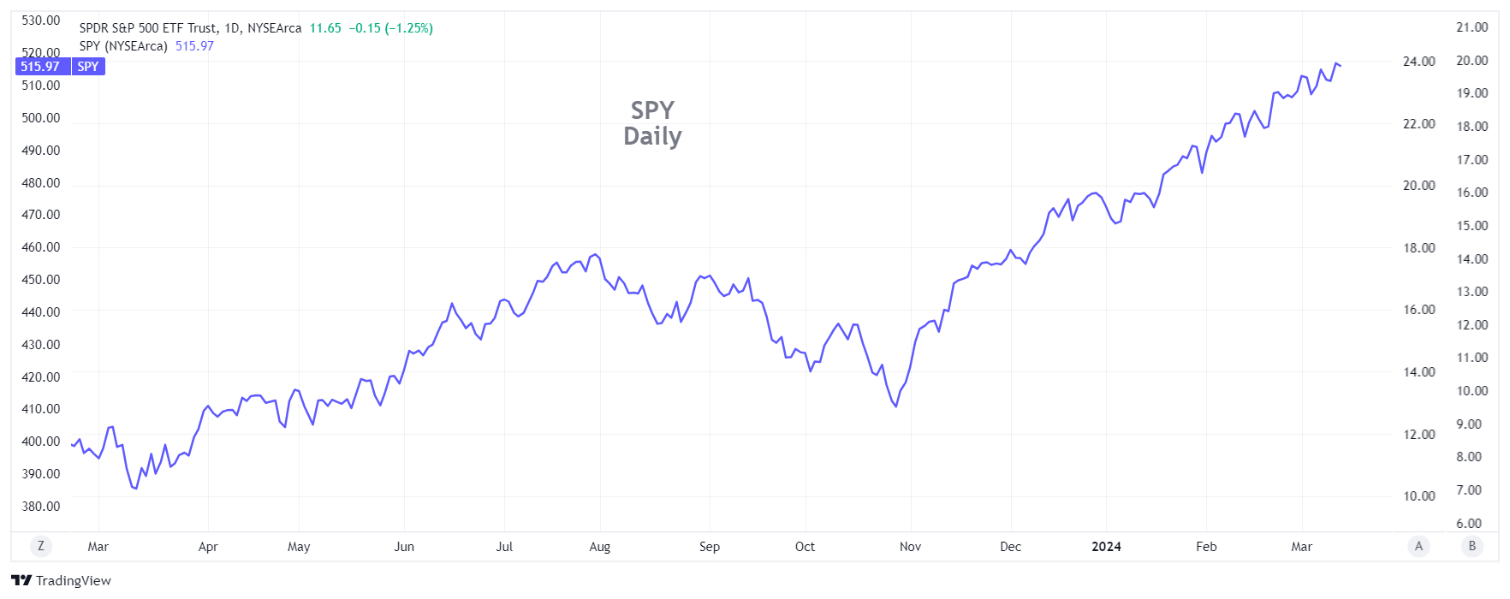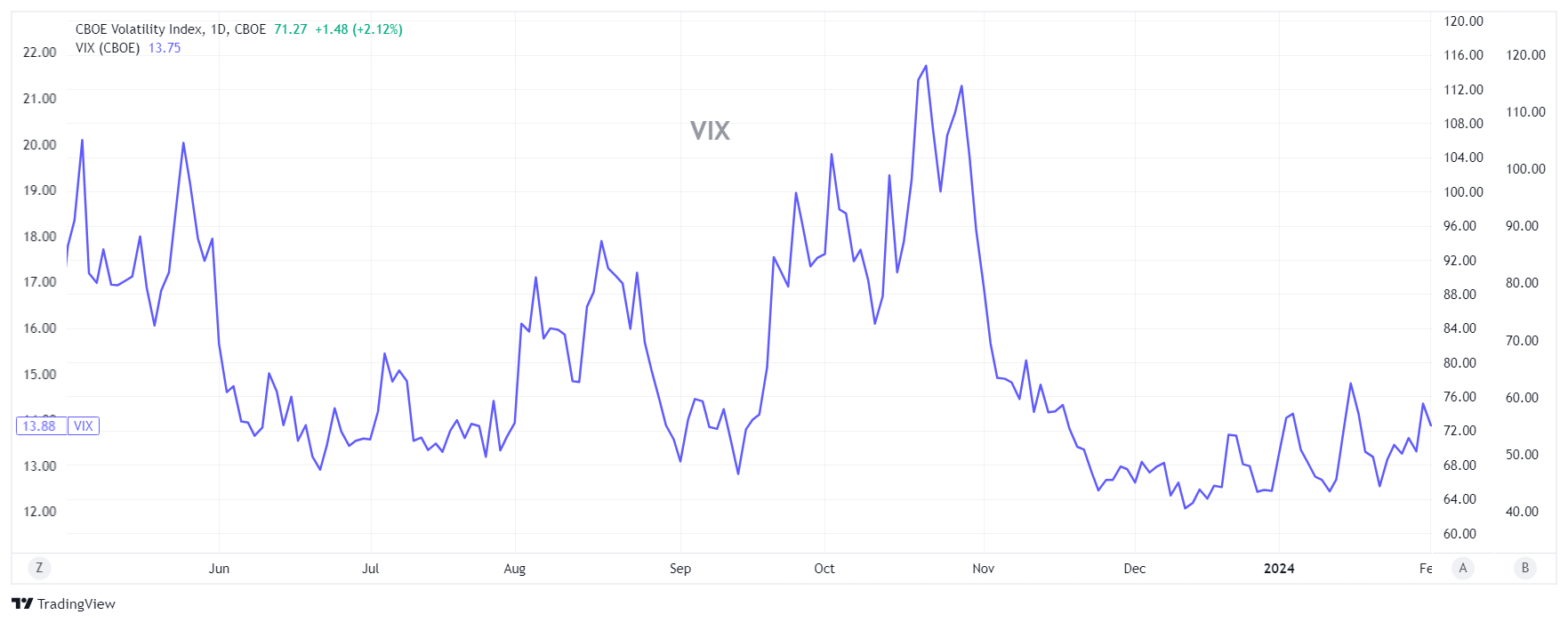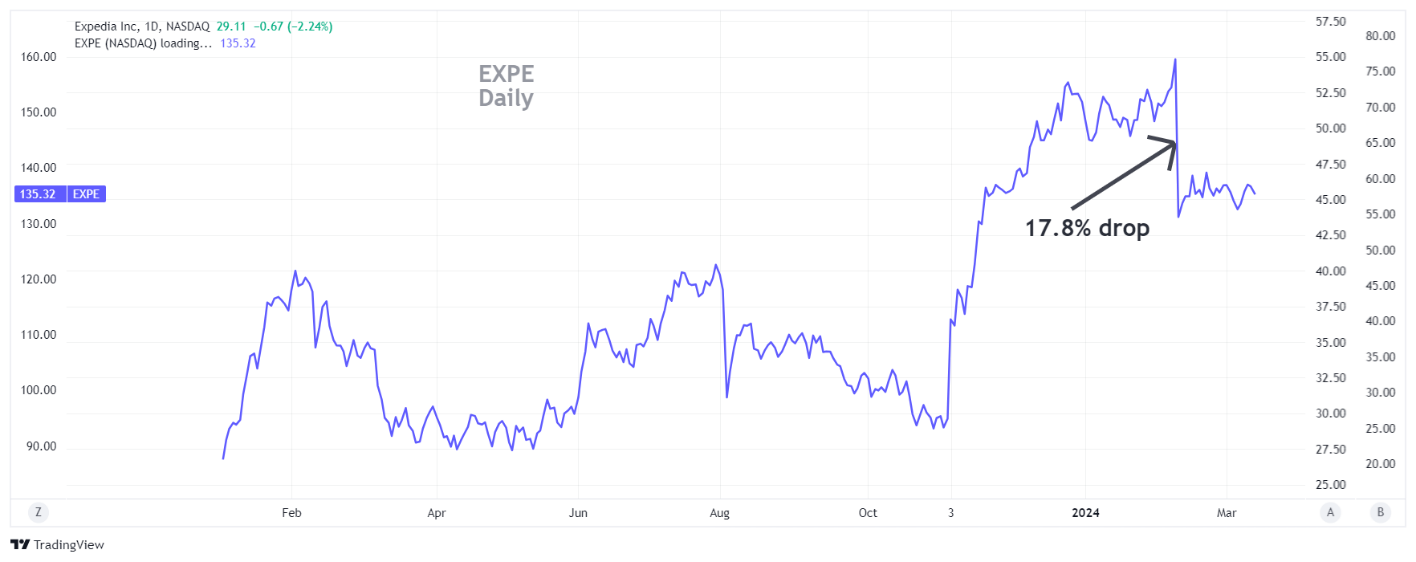Trading the "Big Dips"
March 14, 2024
The Markets at a Glance


Another week in the uptrend
An uptick in inflation reported this week failed to halt the market from continuing its upward march and failed to shake volatility out of its complacency. VIX remains subdued at 13.75 and while the technicians are hard at work trying to find any indicators that would suggest the overall rally is ending, few have emerged.
Under the surface, however, there continues to be plenty of action and high volatility on selected issues, especially those who recently issued earnings announcements that were exceedingly positive or surprisingly negative. Thus, the market continues to favor trend followers and those who buy the dips with long or hedged-long option strategies.
For those who buy stock, purchasing after dips is a reasonable long-term strategy with good odds for success. But that level of success doesn't tend to excite option players, who will generally seek more leverage and hold shorter term objectives. As an example, let's take Expedia (EXPE). The stock recently had a 17.8% drop after disappointing earnings.

Strategy talk: Trading the "Big Dips" With Options
If you wanted to take a long position in EXPE using options, the most conservative approach would be to initiate a covered call write. At Wednesday's closing prices, EXPE was 135.32 and the April 135 call could be sold for 5.40. That covered call write would return 3.9% if the stock is above 135 at April's expiration, which is 36 days away. On an annualized basis, that equates to 39.5%.
A pension fund would probably find that attractive, or write a 140 call for an even higher potential return for the period. An options trader, on the other hand has several ways in which to approach the same scenario with much more leverage. Buying an in-the-money call instead of stock would be a start. The April 110 call would cost around 26. That means you'd be paying around $.68 per share in time value that would dissipate, but that would buy you more than 5X leverage over the stock owner.
Then, you can write the same call as the stockowner and get a potential return for the period of 21%, which annualizes to 213%. That, by the way, has actually less total risk than the covered call writer is exposed to, since the stock owner can potentially lose almost $130 per share, while the option player cannot lose more than $20.60 per share.
Another way to achieve a similar amount of leverage with the same risk is to simply write the EXPE April 135 put at a price of around $4.40. If the stock is above 135 in April, the put writer makes the same 4.40 profit as the spread above does and only slightly less than the $5.08 maximum potential profit from the covered call write. The margin required to execute that put write would initially be $26.70 per share, also providing more than 5X leverage over the stock owner.
For a greater potential return in any of these strategies, one can write a higher strike call than the 135 and can write weeklys rather than one with over a month until expiration.
I should mention that when stocks take a big hit, like EXPE, the implied volatility on their short-term options usually spikes upward, making those options somewhat overpriced. That's good news for selling the 135 put or call but would also mean that buying the April 110 is also a bit expensive. That's why it is best to buy an in-the-money for your long option that has fairly little time value. In that way, a higher implied volatility will only minimally affect that option's price.
Got a question or a comment?
We're here to serve iVol users and we welcome your questions or feedback about the option strategies discussed in this newsletter. If there is something you would like us to address, we're always open to your suggestions. Use rhlehman@ivolatility.com.
Previous issues are located under the News tab on our website.